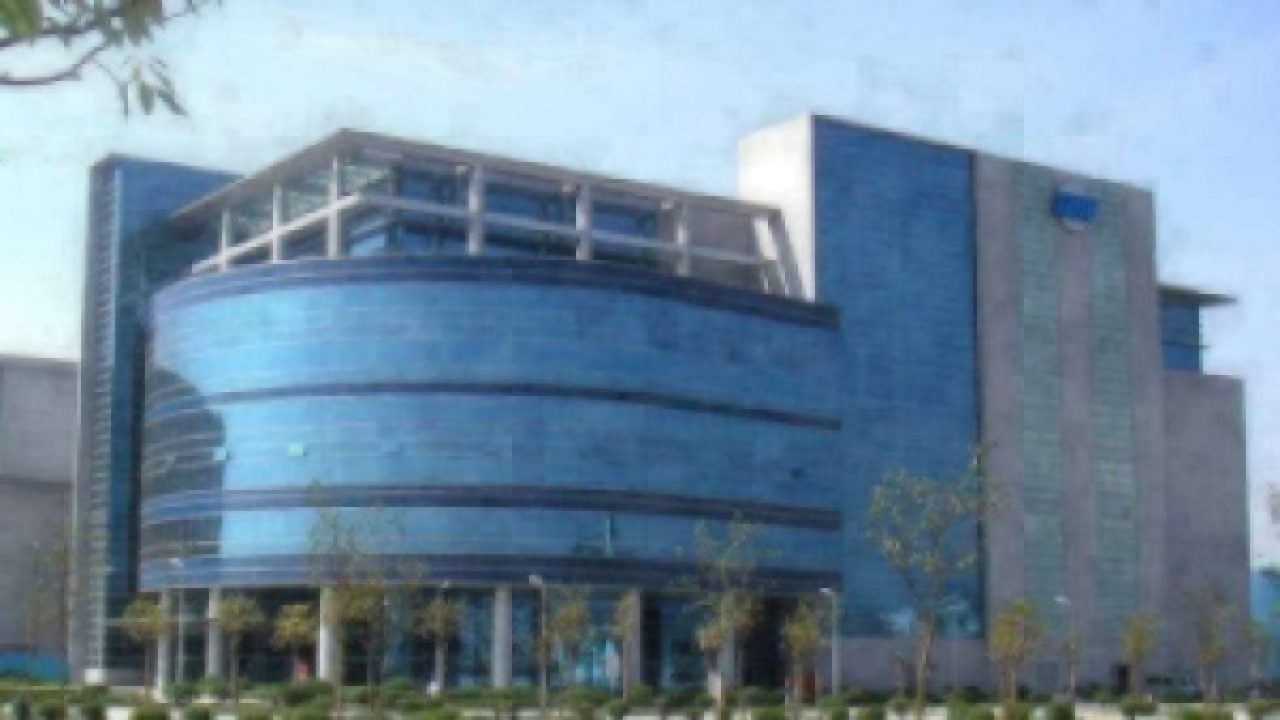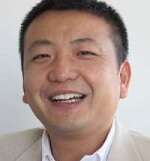SMIC Rift: Who’s in Charge of China’s Chip Industry?
Article By : Junko Yoshida

A write up of what we have learned about SMIC Co-CEO Haijun Zhao, because Zhao's rumored resignation has opened the door to see what's brewing inside the Chinese semiconductor industry.
We decided to write up what we had learned about SMIC Co-CEO Haijun Zhao, because Zhao's rumored resignation has opened the door to a rare opportunity to see what's brewing inside the Chinese semiconductor industry.
We began seriously pursuing a story about SMIC co-CEO Haijun Zhao’s possible resignation from his top post at China’s largest semiconductor foundry when we got a tip from one of our sources in China that what had long been only speculation was now fact. The movement of top executives can often offer a glimpse into the workings of the companies they head up and the markets in which those companies are involved, but the comings and goings of these particular executives have consequences for the entire Chinese semiconductor market.
For months, we’d heard rumors that acrimony between Zhao and SMIC co-CEO Liang Mong Song was percolating. Liang is renowned as a technology whiz who understands advanced process nodes, but the word on the street is that he’s not a people person. In contrast, Zhao is said to have found Liang’s style “too aggressive.”
To move the story, we needed other sources who might know firsthand what’s going on at SMIC.
After SMIC issued a statement to officially refute the rumors (the company said that Zhao and Liang remain co-CEOs at the company), our once-hot lead looked pretty cold. But reporters don’t readily give up on a reliable tip. The flip side of SMIC’s official statement, we reasoned, is an indication that what started out as a murmur has grown to be widely circulated speculation among the public, which forced SMIC into public acknowledgment by denial.
A few days later, we found someone who’d had meetings with SMIC executives on this very topic. We plumbed another source who could corroborate. The wheels were churning again.
Here’s a disclaimer, though. There remains a slight chance Zhao might change his decision to leave SMIC at the last minute, if SMIC gives him enough incentive to stay.
Nonetheless, we decided to go ahead to write up what we had learned.
Why? Because Zhao’s rumored resignation has opened a rare opportunity to see what’s brewing inside the Chinese semiconductor industry.

SMIC's HQ in Shanghai
Let us break it down.
1. SMIC’s 14-nm struggle
SMIC’s long technical struggles on 14-nm process node are broadly known. What surfaced here – the on-going frosty relationship between the co-CEOs – can be even more detrimental to SMIC’s operations. Given that Zhao and Liang were brought to SMIC in 2017 to invigorate 14-nm development, this stalemate undermines confidence in both executives and SMIC at large. One source, based in the United States, was blunt: “The fact that both might resign is not a surprise to me.”
2. Tsinghua Unigroup
Zhao’s resignation at SMIC became more credible when we learned that Zhao seems to have already lined up his next job. Zhao has been courted by Tsinghua Unigroup chairman Zhao Weiguo to run Unigroup’s yet-to-build DRAM fab in China.
3. DRAM: China’s new ‘platform’
Curiously, Zhao’s potential resignation from SMIC has shed more light on China’s push for local DRAM production.
In 2016, Tsinghua Unigroup sank nearly $100 billion into construction of memory fabs in the cities of Wuhan, Nanjing and Chengdu. At the beginning of 2017, the holding company invested $30 billion to build a base in Nanjing, mainly producing 3D-NAND flash and DRAM memory. Tsinghua’s fab in Nanjing, however, is not built yet.
Although several actors (Innotron Memory and Fujian Jin Hua Integrated Circuits included) were already planning DRAM production, the result is too many initiatives yielding little. None of the Chinese-owned DRAM fabs has emerged as a successful player, largely because China lacks DRAM IP.
Suddenly, Tsinghua Unigroup is being viewed as a unifier, shooting to combine all these separate DRAM operations.
Zhao Haijun, reportedly, will be tasked to lead Tsinghua Unigroup’s DRAM strategy and fab, “which of course is the only semiconductor platform which will be much bigger than SMIC in China,” our sources told us.
In short, for ambitious Chinese executives, SMIC is no longer the only platform on which to build careers and reputations. DRAM is now the promising new ‘platform.’
4. Everyone wants to become a boss in China
The saga of the deteriorating relationship between Zhao and Liang at SMIC illustrates one reality that hasn’t changed in China. Every engineer/management executive in China wants to become the boss of a big entity. Many appear to believe that Zhao deserves a bigger platform of his own. Leading Tsinghua Unigroup’s DRAM strategy would fill that bill.
5. Musical chairs among a small talent pool
Another unchanged problem in China is a remarkably small pool of domestic talent – especially at the management executive level. It is not unusual that the same executives are being recycled to head up various semiconductor outfits in China.
Among the best examples is Simon Yang, who previously served as COO/CTO of SMIC, and CTO/SVP of Chartered Semiconductor. He was handpicked in 2012 to run XMC, China’s Nor Flash manufacturer. Today, Yang is the CEO of Yangtze Memory Technologies Co. (YMTC), a developer of NAND flash memory.
Tsinghua Unigroup owns a controlling share of YMTC, which started out as the main entity to implement “the national memory base project” in China.
Another example is Innotron Memory, one of two fabs reportedly gearing up for volume memory production. Innotron has reportedly yielded an initial sample but with a very low yield rate. Innotron’s CEO is Zhu Yiming, ex-CEO at GigaDevice, a Beijing-based developer of Serial NOR Flash Memory.
Now, SMIC’s Zhao is joining the club. He will leverage his SMIC experience to lead another national-scale memory initiative, this time at Tsinghua Unigroup’s DRAM project.
6. Who is guiding China’s semiconductor industry?
Despite the billions it is eagerly plunking down to kick-start domestic semiconductor manufacturing infrastructure, China has so far failed to build a domestic semiconductor industry to offset chip imports. The nation, which assembles electronic devices for companies ranging from Apple to ZTE, has the world’s largest semiconductor market.
Here’s the inevitable question nobody is asking: Who’s in charge of China’s chip industry? China’s bankroll is fat, but who decides how to blow it? Who makes strategic decisions about the direction of China’s fabs and startups? Are any of these companies getting good advice? If so, who from?
If history is our guide, we know that many private investors, startup founders and regional governments’ economic development agencies in China will flock together on what seems like the hottest thing on the market for the moment. Their investment efforts will saturate, then fragment the market. This pattern held for the many Chinese startups developing LCD drivers, then smartphone apps processors, now AI accelerators and memory production.
Given that Tsinghua Unigroup is the largest chipmaker in China and the world’s third-largest supplier of mobile phone chips, the company might be emerging as the ultimate arbiter of the Chinese semiconductor industry. Besides its memory production plans, Tsinghua Unigroup is also already the third-largest shareholder in SMIC after Datang Telecom and the China National IC Industry Investment Fund.
Perhaps Tsinghua will evolve into the Boss. But we have some doubts. There are still way too many ambitious Chinese engineers, despite starting small, who think they can strike it rich and build an empire.
Handel Jones, the founder, owner, and CEO of International Business Strategies (IBS), Inc., said that IBS expects the DRAM market to have growth in 2020 after decline in 2019. But how much growth? Begging that question, Jones said, “I do not understand why China would commit $10 billion or more to a new DRAM fab.”
Subscribe to Newsletter
Test Qr code text s ss






